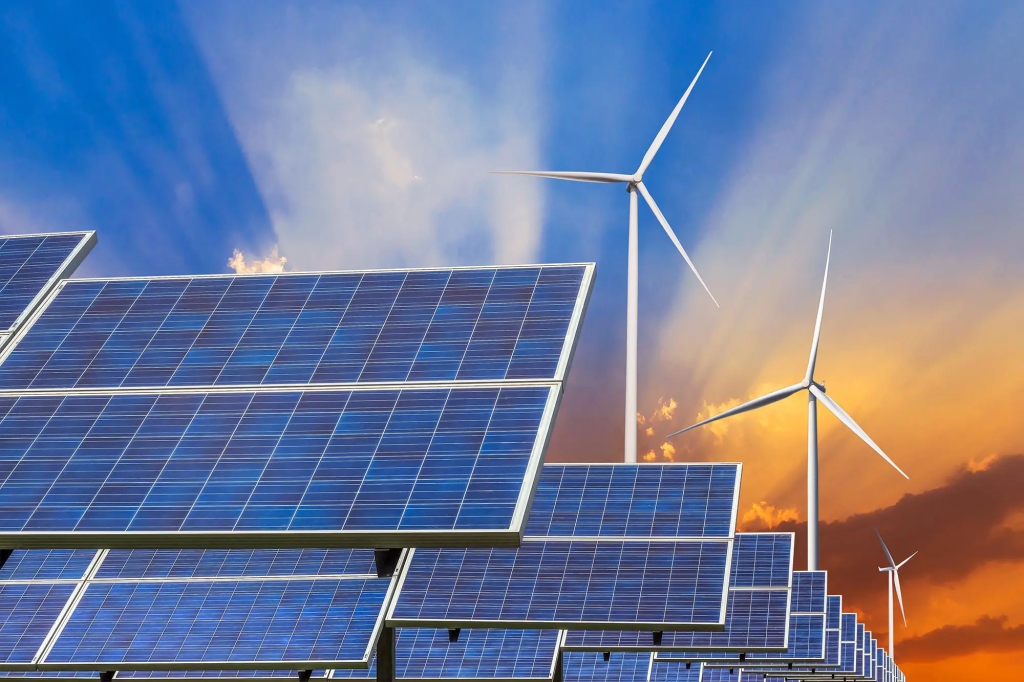Renewable energy has become an increasingly important topic in recent years as we strive to transition towards a more sustainable future. With the pressing issues of climate change and dwindling fossil fuel reserves, it is crucial that we explore and invest in alternative sources of energy.
One of the key advantages of renewable energy is its ability to produce electricity without depleting natural resources or releasing harmful emissions into the atmosphere. Unlike fossil fuels such as coal, oil, and gas, which are finite and contribute significantly to global warming, renewable energy sources are virtually inexhaustible. Sunlight, wind, water, geothermal heat, and biomass can all be harnessed repeatedly without causing harm to our planet.
Solar power is one form of renewable energy that has gained immense popularity over the years. By converting sunlight into electricity through photovoltaic cells or concentrating solar power systems, solar panels offer a clean and abundant source of power for homes and businesses alike. Moreover, solar technology continues to advance rapidly with improved efficiency and decreasing costs.
Wind power is another promising source of renewable energy that harnesses the kinetic energy from moving air masses. Wind turbines have become iconic symbols on landscapes around the world as they generate electricity by spinning large blades connected to generators. Wind farms can be established both onshore and offshore depending on geographical conditions.
Hydropower utilizes the force created by flowing water to generate electricity through turbines placed within dams or river systems. This reliable source accounts for a significant portion of global renewable electricity production today due to its widespread availability across many countries.
Geothermal energy taps into heat stored beneath Earth’s surface using steam or hot water reservoirs found in volcanic areas or deep underground wells. The steam produced drives turbine-generators capable of producing clean electricity around-the-clock with minimal environmental impact.
Biomass refers to organic matter derived from living organisms like plants or animals which can be converted into biofuels or used directly for heating purposes. Biomass energy can be sourced from agricultural residues, forest waste, or dedicated energy crops. It offers a viable alternative to fossil fuels in sectors like transportation and heating.
The adoption of renewable energy has numerous benefits beyond just reducing greenhouse gas emissions. It also helps create jobs and stimulate economic growth by driving investments in the renewable sector. According to the International Renewable Energy Agency (IREA), the renewable energy industry employed over 11 million people globally in 2018, with job creation projected to continue growing.
Furthermore, as we transition towards renewables, we reduce our dependence on imported fossil fuels and decrease vulnerability to price fluctuations in global oil markets. This increased energy independence enhances national security and reduces geopolitical tensions associated with resource competition.
Renewable energy also presents an opportunity for decentralized power generation, allowing individuals and communities to become self-sufficient producers of clean electricity. Rooftop solar panels are increasingly popular among homeowners who wish to generate their own power while reducing their reliance on traditional utility companies.
However, despite all these advantages, there are challenges associated with the widespread adoption of renewable energy sources. One primary concern is intermittent power generation due to weather conditions or seasonal variations. Overcoming this challenge requires investment in storage technologies like advanced batteries that can store excess electricity generated during peak periods for use when demand is high or supply is limited.
Another hurdle lies in modernizing existing infrastructure to accommodate the integration of large-scale renewable projects into the grid system effectively. Such upgrades require substantial investment but are essential for ensuring a smooth transition towards sustainable energy systems.
In conclusion, investing in renewable energy is not only necessary but also beneficial for our planet’s future sustainability. By embracing various sources such as solar power, wind power, hydropower, geothermal heat, and biomass, we can reduce greenhouse gas emissions while promoting economic growth and job creation. Although challenges remain regarding intermittency and infrastructure upgrades, these obstacles can be overcome through continued research and development coupled with supportive government policies. It is time for us to prioritize renewable energy and take significant steps towards a greener, more sustainable future.

Leave a comment